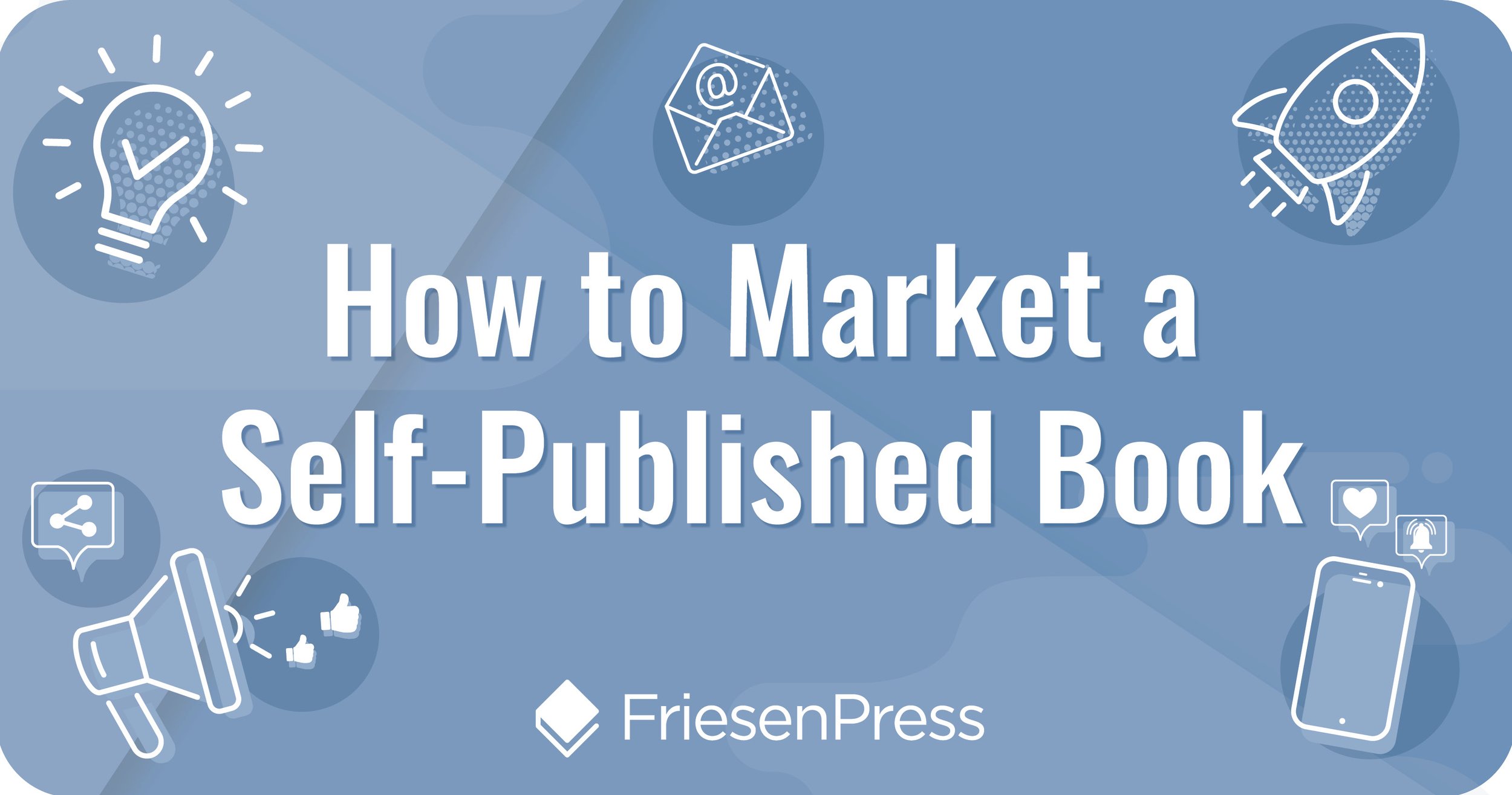How to Market a Self-Published Book
Let’s be honest: most writers dread the idea of marketing. The thought of having to sell something — even their own book that is so uniquely them — makes their skin crawl. “Promote myself? I’m a writer, can’t I just curl up in my nook and write all day?”
And it’s true: writers write! But when you publish a book, you become an author, and authors do so much more.
Whether you’re signing with a traditional publisher or self-publishing your book, success in the industry today requires you to wear many different hats, and perhaps none are more important than that of book marketing and promotions. Strong marketing skills and business savvy can be what makes your book stand out from the millions of others released every year.
Having coached and assisted over 9,000 authors in bringing their books to market since 2009, we know these key marketing skills can be developed and strengthened over time, driving sales, connecting with readers, and eventually leading to your success.
By reading this guide, you’ve already started. Continue on to learn all about how to market a self-published book in 2025, including how to:
Develop your marketing mindset;
Establish your book marketing foundation early;
Learn the key components of highly marketable books;
Build your author platform from the ground up;
Generate sustainable sales momentum (and more).
Your book is out there (or it will be soon). Let’s make sure people hear about it.
Treat promotion as an opportunity: Book promotion should be an exciting opportunity rather than a daunting task. Your unique voice as a writer can be a powerful tool in your marketing efforts.
Define your readers and their needs: Identify your specific niche of readers and understand what they are looking for to create a compelling unique selling proposition (USP). Building a reputation as an expert in your genre on social media can help generate early buzz.
Invest in a professional-quality product: Make sure your book has an engaging title, a professionally designed cover, and captivating back cover copy. It’s also essential to invest in professional editing and printing to create a polished final product.
Develop your author platform early: A great book is the foundation of your author platform, which should also include a solid business plan and a professional website. Publishers are more likely to work with authors who have already established a platform.
Generate and maintain sales momentum: Plan a book launch and encourage readers to leave reviews on platforms like Goodreads. Use social media teasers and reach out to the media for interviews to keep the momentum going.
1. Get in the zone: reframing book promotions
Authors’ marketing struggles often revolve around book promotion feeling like a chore that they have to do — a necessary evil that feels unnatural to them.
While a common sentiment, if you’ve published (or intend to publish) a book, you actively want people to read it. To ensure your book reaches the right readers, you need to promote it; you’re doing all your hard work a disservice if you approach this leg of the journey with anything less than an open mind.
This is especially true if you subscribe to the myth that all marketers are extroverted. In fact, being introverted and introspective is likely to mean that you are a sensitive, empathetic listener — a true promotional superpower.
So, before you dive headfirst into the world of promotional buzzwords, try to remember that book marketing is something you get to do, not something you have to do. In creating a book you want others to read, you’ve demonstrated a bravery that most non-authors could only dream about. Harness that energy for your promotions efforts!
2. Start with why: establishing your book marketing foundation
The first step of marketing a book is to know your audience. Be as specific as possible when thinking about your target reader. For example, for someone with a vegan lifestyle cookbook, “30- to 40-year-olds who are vegan, or want to go vegan but don’t think they can do it” might work great. Drill down as much as possible to the niche where you have the most credibility. You can build from there, but that niche is your target reader. Appeal to their needs and habits throughout your book marketing journey.
Think deeply about your target readers and do some research. What will those readers get from your book that is both rewarding for them and unlike the rewards they’d get from other books? Your answers will form the basis of your book’s unique selling proposition (USP). Whether you’re just starting to kick a book idea around or you’ve already published, your USP will function as a laser-focused answer to one of the most important questions you’ll face as an author: why will your target reader buy your book and not someone else’s? Find your “why” and you’ll find the key that unlocks your USP.
Another smart early marketing strategy is to build your reputation as an authoritative voice in your book’s genre or topic area. (You can’t spell “authority” without “author,” after all.) This is an excellent way to seed interest in your book months (or even years!) before its release. To demonstrate why potential readers should see you as someone whose message and/or story are worth reading, social media is a great (and free) place to start. Participate in discussions around your book’s genre and/or subject matter, start blogging or vlogging, monitor chatter around comparable titles, and network with individuals who share your interests on your favourite social media platform(s) of choice. In doing so, you’ll start to build trust with your budding audience and lay a foundation that will turn into book sales down the road. You don’t even need to have a finished manuscript to get started — just an idea you’re passionate about.
If all this sounds overwhelming, we highly recommend taking the time to draft a book proposal that crystallizes your target audience and how your book meets that audience’s needs. Book proposals are often required by traditional publishers before they sign authors to contracts, and they’re an excellent guiding light for self-published authors as well. What’s in it for your readers? How are you going to find them? How are you going to make them want your book? To help you put together a great book proposal, we’ve created an easy-to-follow template for writers of fiction, nonfiction, and children’s books. Your completed proposal will be a helpful guide at every phase of the process — from writing and publishing to promoting.
3. Pass the eye test: creating a market-ready book
Now it’s time to focus on the makeup of your book itself: the product readers are actually going to buy. With millions of books coming out every year, it’s imperative that your book passes the eye test and meets readers’ baseline requirements. This is doubly true if you’re independently publishing your book; there’s no faster way to sink any credibility and goodwill you’ve earned with readers than by trying to sell them an unedited book that looks like it was glued together outside your local print shop.
Avoid those missteps with this quality control book marketing checklist:
When creating a market-ready book, don’t be shy about reaching out to your target readers to ask for their feedback. If you have multiple book covers, back cover content ideas, or even if you’re not sure about a chapter, run them by people in your desired audience and get their thoughts about what they prefer. A little early testing can have a massive payoff when it’s time to start selling!
4. Build your author platform
With a strong foundation in place, it’s time to start building up your author platform.
An author platform is composed of several elements (which we’ll dig into below) and represents your ability to reach and connect with potential readers. Your platform is what signals “I have a voice worth hearing” and serves as a springboard from which you can continue to build momentum and grow. Your platform is never truly “complete”; even the world’s biggest and most successful authors’ platforms are in a state of constant flux, growing and evolving alongside their marketing efforts and cultural influence. And if you’re self-publishing your book to get the attention of traditional publishers, you should know that they tend to have a strong bias toward writers with a pre-built platform, because they’re likely to come with surefire sales.
When just starting out, your platform is likely to be modest: perhaps your close friends and family, and anyone in your network who might be interested in the topic of your book. But you also know that you have more readers out there — your target audience — and your platform should be explicitly geared toward their needs.
Here are five crucial ways to build and sustain your platform:
A great book
As you might have guessed, nothing will have more impact on your author platform than your book (or books, if you’re publishing a series)! A great book is the engine that drives everything else forward. It’s worth noting, though, that the moment you share that you’re publishing a book is the moment you begin to shift others’ perceptions of you.
Your book will also form the foundation for your author brand — your commercial identity. It’s both what you stand for and what makes you stand out from other authors. No matter how you define your brand, consistency in visuals and language is key.
A business plan
An intangible but no less essential aspect of any author platform: a solid business plan will define clear goals for your platform and your promotional strategy.
Once you’ve established a platform, the challenge becomes how to grow it at a scale that will allow you to realize your ambitions, i.e., speaking at conferences, getting into book club picks, running a Patreon, or guesting on podcasts. By honing your goals as an author, you’re also orienting yourself in a way that makes determining your next moves — to evolve your author platform — a lot easier.
A professional website
A professionally designed website forms the foundation of what your online presence will look like, so it’s a fundamental marketing tool for every author. Your website communicates your book’s USPs, advertises any upcoming events to readers, and (most importantly) includes links to purchase your book. When you post on social media, you’ll often be linking back to your website so users can take the actions you desire — like reading a blog post, registering for an upcoming event, or buying a copy of your book. You can even start gathering email addresses from people interested in your work and target messaging directly to them!
On the more technical side, your author website will be a primary source for Google and other search engines to link your name (or pen name) with your book title so they can be easily found by anyone searching for more information about you. This is the basics of search engine optimization, and a website is a huge factor in getting you in search engines’ good graces.
A social media presence
For credibility and professionalism as you engage with readers, carry your website aesthetics into your social media presence. Networking on social media is also a fantastic way to build your reputation as an authoritative subject matter expert. Create social media accounts for your author platform that are distinct from your personal accounts to denote a separation of the professional and personal. When engaging online, live your values authentically but don’t forget that you're representing yourself as an author. Everyone has some unique aspect that can help readers form an impression of who you are.
High-quality promotional material
In today’s digital world, it’s easy to underrate the power of a physical leave-behind. When engaging with your authors in person, such as at readings or conferences, promotional materials like bookmarks, posters, and postcards are all great things to give out so people have a reminder and/or something to pass along to their own networks. Business cards with contact information and social media handles are also helpful to give to people who you would like to connect with in the future. Professionally designed and printed materials with consistent branding build credibility in you as an author.
5. Generate sales momentum
By now, you’re primed to hit the ground running with your book marketing efforts. Time to strategize around generating demand and sustained sales momentum!
Before you break into an all-out sprint, a word of caution: it’s easy to bite off more than you can chew when you’re planning your book marketing blitz, so be mindful of your energy levels. You might have a lot of ideas and opportunities in front of you, but you can’t (and shouldn’t!) try to take them all on at once. Doing so will eventually lead to burnout, and book marketing is a long game. You’ll be doing your future-self a favour by playing to your strengths and pacing yourself.
With that caveat out of the way, here are some great marketing strategies to get you started:
Hold a book launch
A book launch is an opportunity to celebrate your book with your friends, family, and local community in person; as such, it is an exciting and career-defining landmark moment for any writer!
From finding the right venue to planning your follow-ups, there are several steps to setting up an effective book launch, but the sales (and bucket list) payoff is more than worth the effort.
Ask readers to review your book (and leverage Goodreads)
Positive word of mouth is the dream marketing goal for any business owner — and that includes authors! One of the most powerful ways word of mouth is manifested online is through reader reviews.
Authors can of course collect reviews on most retail sites where their books are sold (Amazon, Barnes & Noble, etc.), but it’s also important to use book review sites like Goodreads. While readers have to wait until publication day to post reviews to Amazon, they can post pre-publication on Goodreads. This is where the bulk of pre-publication reviews should be collected.
Share teasers
Give your social audience or email list an engaging and tantalizing taste of your book with thoughtfully designed and deployed teasers.
Teasers are effective both pre- and post-launch. Your teasers can take many different forms, including cover reveals, juicy chapter previews, or even a literal book trailer. You can generate interest and hype before your launch, and use (for example) a free download of a chapter as a lead magnet to grow your email audience.
Reach out to media, radio, and podcasts for interviews
Television, newspaper, radio, and podcast interviews are tried and true methods of spreading your book’s message, raising awareness, and expanding your author platform. These opportunities allow you to speak at length about your book project in the hopes of resonating with (hopefully many!) new readers.
Earning interview opportunities starts with a high quality, targeted query letter. Once your foot is in the door, diligently prepare for the big moment and you’ll be interviewing like a pro in no time. (And be sure to share the coverage on your socials, website, and email newsletter!)
Generate value-added supplemental content of your own
You can sustain interest in your project (and in yourself as an author) by creating ongoing blog posts, email newsletters, and social media content that ties into your book’s USP and author brand. You don’t have to post new content every day — when in doubt, remember that substantive quality is often better than empty-calorie quantity. Consider worksheets, short stories, Q&As, etc. No matter what supplementary content you create, be sure to bring it back to your book with a link to your preferred retail channel so readers can easily buy it.
###
If you’ve reached the end of this guide and still feel overwhelmed, know that you are not alone. As with editing, design, and illustration, there are book marketing professionals out there who can help you fill in any skill gaps and empower you to promote with confidence. At FriesenPress, our promotions team has helped thousands of authors bring their books to market since 2009. We include promotional support with every Path, because we know even a little guidance and structure can make a world of difference in someone’s level of confidence.
Every author’s publishing and promotional journey is as unique as the contents of their book. This guide has highlighted many general “pillars of promotion” — tools and techniques that virtually every author can benefit from — but book marketing magic often happens when you get creative and find novel ways to colour outside the lines. When in doubt, come back to the “why” that drives your USP: Why will your target reader buy your book? What makes you the right voice to tell this story or share this message?
Many authors find the precipice of publishing a book equally thrilling and nerve-wracking — particularly when it’s your first time going through the process. Putting pen to paper and telling your story is a brave act, and promoting your work is no different.
You and your book are worthy of taking up space and owning the stage. Time to step into the spotlight and share your work with the world.















